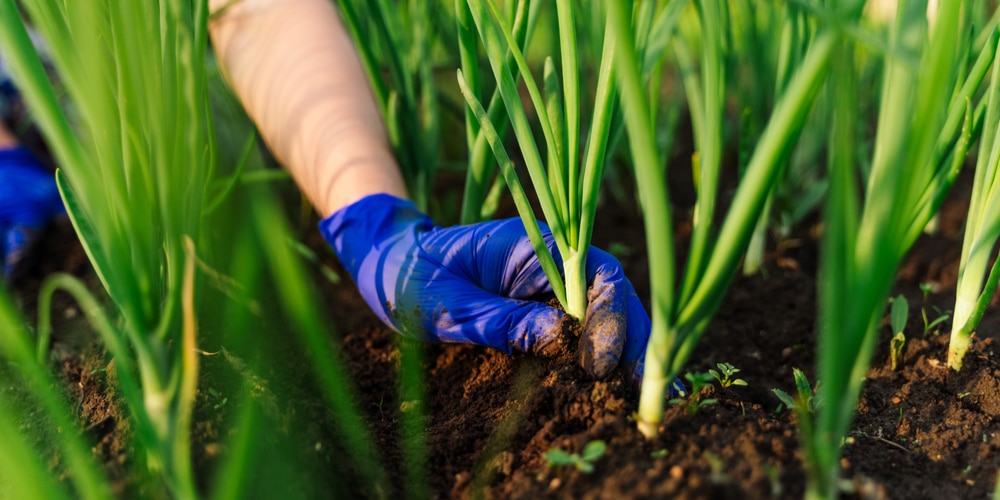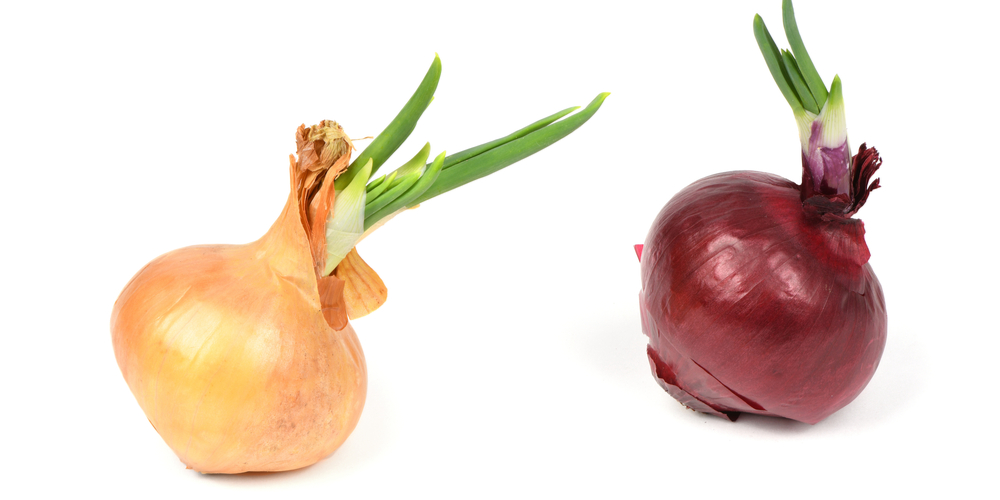Is An Onion a Tuber? Despite the popular conversation, onion is not a tuber crop. Instead, it is a layered flowering and edible bulb that forms underground. Tuber crops are plants that attach to the root and store vital energy and carbohydrates, allowing the plant to regrow with asexual reproduction.
The onion bulb can also be a root vegetable alongside other Allium vegetables such as spring onions, shallots, garlic, and chives.
However, the onion is not a true root vegetable like carrots and beets, for its roots grow underground stems that receive nutrients from the soil with modified stems named bulbs. In other words, the onion sits inside the bulb, extending from the inside out.
These key characteristics have grown inside onions, including:
- Green onions
- Red onion
- Yellow onions
- White onions
Onions offer gardeners, home cooks, and chefs many health benefits.
Green Onions
Green onions grow in the form of standard green onions, chives, and spring onions. Green onions have tiny bulbs with a mild flavor that can be eaten raw as a garnish on top of stir fry or cooked into soups and stew.
Chives have a strong garlic flavor and are often used to garnish your favorite foods like mashed potatoes or the famous onion dip with chives and potato chips. And Spring onions are savory and serve as a garnish for many popular dishes.
Green onions are prized worldwide for their rich vitamin C and antioxidants that help prevent chronic diseases and inflammation. They are also a popular go-to remedy for the common cold, boosting the immune system with vital vitamins like magnesium and iron.
Red Onions
Red onions are rich in antioxidants, unlike any other onion. In addition, they grow sulfuric compounds that have great potential to protect the stomach from ulcers, urinary tract infections, and even some cancers.
Red onions are best enjoyed chopped into your favorite meal or soup dish, sprinkled on a salad, and paired with your favorite protein.
Red onions are the easiest biennials to grow. They grow their seeds, leaves, and bulbs underground for the first year. And they’re mature and ready to harvest the following year.
Yellow Onions
Yellow onions have a similar flavor profile to red onions. However, their color is quite different, and their high starch content makes them more suitable for sauteing, roasting, caramelizing, and long-hour soups and stews over red onions.
And like other onions of the same family, yellow onions are packed with nutrients that help the body stay balanced by reducing the risk of heart disease, inflammation, and even blood clot formation.
White Onions
White onions taste milder than red and yellow onions and turn sweet when cooked. Unlike red onions, white onions are low on sulfur content but packed with medicinal properties that support a healthy immune system.
White onion contains over 25 different dietary flavonoid that lowers the body’s risk of developing chronic diseases like heart disease and cancer. Adding any onion to your daily meal plan can undoubtedly inhibit the growth of bacteria and cancer cells.
Is An Onion a Tuber?: A Versatile Vegetable
While onions are not tubers and not a true root vegetable, they are delicious in their own right. Whether you use a white, red, or green onion, they are sure to add a sweet and spicy kick to whatever dish you make. In many states onions can grow year round and are a fantastic fall crop.


